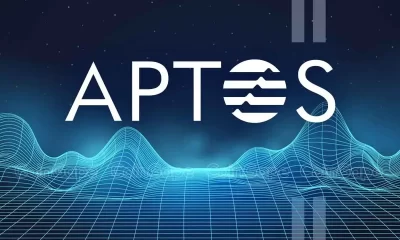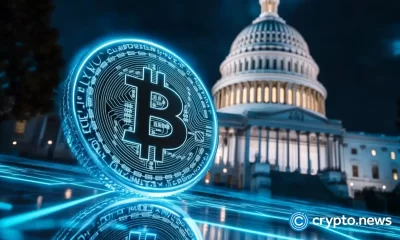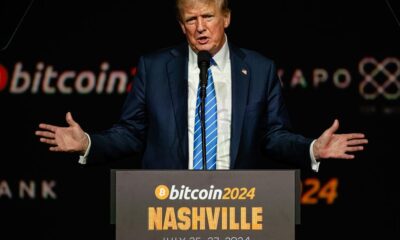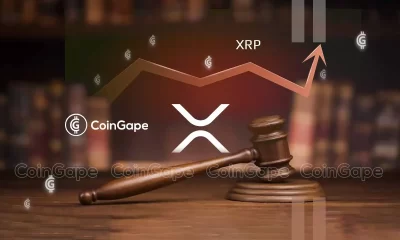Uncategorized
Cardano’s ADA lands spot in US Digital Asset Stockpile — Will it generate value?
Published
1 week agoon
By
admin
On March 2, President Donald Trump mentioned Cardano’s ADA (ADA) token among the cryptocurrencies to be included in the US strategic crypto reserve. Trump’s March 6 executive order clarified that altcoins would be part of the Digital Asset Stockpile (DAS) under the “responsible stewardship” of the Treasury.
ADA’s potential inclusion in a government-managed portfolio sparked industry-wide surprise and, at times, harsh criticism. Although it has loyal investors who have supported it for years, many in the crypto community questioned why the token was included in the digital asset stockpile.
Let’s analyze the blockchain to see if ADA’s fundamentals and utility support its place in the US Digital Asset Stockpile.
The case for ADA in the US Digital Asset Stockpile
Launched in 2017 via an ICO, Cardano is one of the oldest smart contract platforms. It differs from others through its research-driven design approach and its use of a delegated proof-of-stake mechanism combined with an extended UTXO accounting model.
Cardano’s ambition as a smart contract platform is well captured by X ‘Cardano_whale,’ who outlined the blockchain’s “non-negligible fees, voting power, decentralized consensus, all native token trading paired with it.”
The X post emphasizes ADA’s utility (something “most VC coins lack”) along with Cardano’s decentralized governance as key advantages.
Indeed, Cardano’s Project Catalyst is one of the largest decentralized funding initiatives in crypto. Through it, treasury funds from transaction fees and inflation are allocated democratically to community proposals. Also, unlike the Ethereum network, which still relies on offchain governance for major upgrades, Cardano aims to transition entirely to onchain governance.
The Plomin hard fork that took place on Jan. 29 marked the transition to “full decentralized governance,” according to the Cardano Foundation. It grants ADA holders “real voting power—on parameter changes, treasury withdrawals, hard forks, and the blockchain’s future.”
Cardano’s native coin, ADA, is used for network fees, staking, and governance. Its maximum supply is 45 billion, with 31 billion initially distributed—26 billion sold in the public sale and 5 billion allocated to IOHK, Emurgo, and the Cardano Foundation.
The remaining 14 billion ADA were reserved for gradual release through minting. With 0.3% of ADA reserves distributed as rewards every five days, ADA inflation declines as reserves deplete. The current inflation rate is approximately 4%, with a circulating supply of 35.95 billion ADA.
While a capped supply can support a coin’s value and justify its inclusion in the DAS, other ADA metrics, such as fees and staking yields, lag far behind competitors.
Should Cardano’s lagging activity raise concerns?
Despite its years in the smart contract ecosystem, Cardano has struggled to generate enough activity to establish itself among the leaders. As a result, ADA’s limited usage within the crypto ecosystem raises concerns about its long-term value.
According to Messari’s Q4 2024 State of Cardano report, the blockchain processed an average of 71,500 daily transactions, with 42,900 daily active addresses. Quarterly fees totaled $1.8 million, a stark contrast to Ethereum’s $552 million in fees over the same period, according to CoinGecko.
Cardano’s annualized real staking yield, adjusted for inflation, was approximately 0.7% in Q4, compared to Ethereum’s 2.73%.
Cardano key metrics overview, Q4 2024. Source: Messari
Related: Crypto fans are obsessed with longevity and biohacking: Here’s why
Other blockchain activity metrics reinforce the concern about adding ADA into a government portfolio:
With 449 developers working on the blockchain, Cardano ranks 12th among blockchains in developer count, according to Electric Capital’s report.
Its stablecoins’ share is just 0.01% of the total $224 billion stablecoin market cap, per DefiLlama.
Cardano’s DeFi ecosystem is underdeveloped, accounting for just 0.3% of the total $169 billion DeFi sector. However, if we include its core staking, which does not require locking and therefore is not counted in the TVL, Cardano’s share will grow to 12%.
Cardano’s DApp activity remains low compared to other smart contract platforms. In Q4, it averaged just 14,300 daily DApp transactions—well outside the top 25 and a fraction of Solana’s 22 million. Even more concerning is its 73% decline from Q4 2023, when Cardano recorded 52,700 daily transactions. Such a sharp drop signals a troubling trend for a blockchain that is still in its growth phase.
Cardano DApp transactions, Q4 2024. Source: Messari
Is ADA’s potential enough to justify a US government investment?
The case for ADA in the strategic crypto reserve is far less clear than for Ethereum and Solana, which are leading blockchains in many different categories. Cardano’s low activity, limited adoption, and weak staking incentives raise serious doubts about ADA’s suitability for a government-managed asset pool.
On the other hand, ADA’s capped supply and Cardano’s focus on decentralization give it a unique edge over competitors. They could lead to greater adoption and relevance in the long run.
Furthermore, projects like those by Atrium Lab are exploring Cardano’s native compatibility with Bitcoin through the eUTXO system, which could potentially unlock a new framework for DeFi on Bitcoin and drive activity to Cardano.
Could this possibility be enough to justify ADA’s place in the digital asset stockpile?
As David Nage, the portfolio manager of the venture capital firm Arca, put it,
“Like the rest of crypto, the Cardano ecosystem needs to find and support developers to create products and applications that millions of people enjoy and depend on. Then, they need brilliant storytellers to solidify the narrative behind it to build mass, sustainable audiences. After all that, putting ADA into a US national reserve begins to make more sense, in my opinion. It can be done.”
This article is for general information purposes and is not intended to be and should not be taken as legal or investment advice. The views, thoughts, and opinions expressed here are the author’s alone and do not necessarily reflect or represent the views and opinions of Cointelegraph.
BTC in Stasis Below $88K as Trump Suggests Bigger Tariffs on EU, Canada Dogecoin Price Eyes 10x Breakout After Elon Musk Ghibli Anime XRP Price Rejected at Resistance—Are Bears Taking Control? OpenAI expects to 3X revenue in 2025 but Chinese AI firms are heating up ‘Chart Is Still Broken’ – Crypto Analyst Predicts Sustained Downtrend for Altcoins Until This Takes Place GameStop Announces $1.3 Billion Fundraising Plan To Purchase Bitcoin Published on By OpenAI expects to more than triple its revenue this year to $12.7 billion, despite fast-growing competition from the likes of China’s DeepSeek and other competitors making rapid progress. The ChatGPT creators also expect its revenue target for 2025 to more than double to $29.4 billion by 2026, Bloomberg reported on March 26, citing a person familiar with the matter. The 2025 estimate is a little higher than the $11.6 billion revenue target that OpenAI was reportedly eyeing for 2025, The New York Times reported last September. Bloomberg noted that the bulk of ChatGPT’s revenue has come from its paid AI software subscription offerings for consumers and businesses. OpenAI reportedly hit 1 million paid users for the corporate versions of ChatGPT last September, while the company more recently added a $200 monthly ChatGPT Pro option. The Sam Altman-led firm does not expect to be cash-flow positive until 2029, when it expects its revenue to top $125 billion, the person told Bloomberg. OpenAI is reportedly close to finalizing a $40 billion funding round led by SoftBank Group at a valuation of up to $300 billion, Bloomberg reported on March 26. The firm is also looking to convert its nonprofit business model into a for-profit venture. While the release of DeepSeek’s ChatGPT-competitor “R-1” model sent shockwaves through the AI industry in late January, it sparked a wave of several other high-quality, low-cost AI solutions from other Chinese tech firms, Bloomberg reported on March 26. Baidu Inc. launched its “Ernie X1” model to compete with DeepSeek’s R-1 model in China, while Alibaba Group launched its new open-source AI model for cost-effective AI agents on March 26. Source: David Sacks Tencent Holdings also unveiled an AI chatbot of its own under subsidiary firm Ant Group Co, while DeepSeek released its latest model — DeepSeek-V3-0324 — on March 24. Related: Cathie Wood to kick off El Salvador’s AI public education program While it remains to be seen how these Chinese models truly stack up against OpenAI’s products, the newer and often cheaper options are putting more pressure on the business models of leading US companies, Balaji Srinivasan, a tech investor and former general partner at tech-focused venture capital firm Andreessen “a16z” Horowitz said in a March 22 X post. “China is trying to do to AI what they always do: study, copy, optimize, and then bankrupt everyone with low prices and enormous scale.” Lee Kai-fu, CEO of Chinese startup 01.AI told Reuters on March 25 that DeepSeek’s efforts have positioned Chinese AI firms only three months behind their US counterparts after previously being around six to nine months behind. Source: The Short Bear Meanwhile, OpenAI’s CEO Sam Altman said on Feb. 12 that his firm is looking to ship GPT-4.5 and GPT-5 in the coming weeks or months. Plus and Pro subscribers will be able to run GPT-5 at a “higher level of intelligence” which will incorporate voice, canvas, search, deep research features and more, he said in OpenAI’s technical roadmap update. Among OpenAI’s competitors in the US market are Anthropic, DeepMind, xAI and Google’s Gemini. Magazine: What are native rollups? Full guide to Ethereum’s latest innovation Published on By Despite strong institutional demand, Bitcoin (BTC) has struggled to reclaim the $100,000 level for the past 50 days, leading investors to question the reasons behind the bearishness despite a seemingly positive environment. This price weakness is particularly intriguing given the US Strategic Bitcoin Reserve executive order issued by President Donald Trump on March 6, which allows BTC acquisitions as long as they follow “budget-neutral” strategies. On March 26, GameStop Corporation (GME), the North American video game and consumer electronics retailer, announced plans to allocate a portion of its corporate reserves to Bitcoin. The company, which was on the verge of bankruptcy in 2021, successfully capitalized on a historic short squeeze and managed to secure an impressive $4.77 billion in cash and equivalents by February 2025. Largest corporate Bitcoin holdings. Source: BitcoinTreasuries.NET A growing number of US-based and international companies have followed Michael Saylor’s Strategy (MSTR) playbook, including the Japanese firm Metaplanet, which recently appointed Eric Trump, son of US President Donald Trump, to its newly established strategic board of advisers. Similarly, the mining conglomerate MARA Holdings (MARA) adopted a Bitcoin treasury policy to “retain all BTC” and increase its exposure through debt offerings. There must be a strong reason for Bitcoin investors to sell their holdings, especially as gold is trading just 1.3% below its all-time high of $3,057. For example, while the US administration adopted a pro-crypto stance following Trump’s election, the infrastructure needed for Bitcoin to serve as collateral and integrate into traditional financial systems remains largely undeveloped. Bitcoin/USD (orange) vs. gold / S&P 500 index. Source: TradingView / Cointelegraph The US spot Bitcoin exchange-traded fund (ETF) is limited to cash settlement, preventing in-kind deposits and withdrawals. Fortunately, a potential rule change, currently under review by the US Securities and Exchange Commission, could reduce capital gain distributions and enhance tax efficiency, according to Bitseeker Consulting chief architect Chris J. Terry. Banks like JPMorgan primarily serve as intermediaries or custodians for cryptocurrency-related instruments such as derivatives and spot Bitcoin ETFs. The repeal of the SAB 121 accounting rule on Jan. 23—an SEC ruling that imposed strict capital requirements on digital assets—does not necessarily guarantee broader adoption. For example, some traditional investment firms, like Vanguard, still prohibit clients from trading or holding shares of the spot Bitcoin ETFs, while administrators like BNY Mellon have reportedly restricted mutual funds’ exposure to these products. In fact, a significant number of wealth managers and advisers remain unable to offer any cryptocurrency investments to their clients, even when listed on US exchanges. The Bitcoin derivatives market lacks regulatory clarity, with most exchanges opting to ban North American participants and choosing to register their companies in fiscal havens. Despite the growth of the Chicago Mercantile Exchange (CME) over the years, it still accounts for only 23% of Bitcoin’s $56.4 billion futures open interest, while competitors benefit from fewer capital restrictions, easier client onboarding, and less regulatory oversight on trading. Related: SEC plans 4 more crypto roundtables on trading, custody, tokenization, DeFi Bitcoin futures open interest ranking, USD. Source: CoinGlass Institutional investors remain hesitant to gain exposure to Bitcoin markets due to concerns about market manipulation and a lack of transparency among leading exchanges. The fact that Binance, KuCoin, OK and Kraken have paid significant fines to US authorities for potential anti-money laundering violations and unlicensed operations further fuels the negative sentiment toward the sector. Ultimately, the buying interest from a small number of companies is not enough to push Bitcoin’s price to $200,000, and additional integration with the banking sector remains uncertain, despite more favorable regulatory conditions. Until then, Bitcoin’s upside potential will continue to be limited as risk perception remains elevated, especially within the institutional investment community. This article is for general information purposes and is not intended to be and should not be taken as legal or investment advice. The views, thoughts, and opinions expressed here are the author’s alone and do not necessarily reflect or represent the views and opinions of Cointelegraph. Published on By Polymarket, the world’s largest decentralized prediction market, is under fire after a controversial outcome raised concerns over potential governance manipulation in a high-stakes political bet. A betting market on the platform asked whether US President Donald Trump would accept a rare earth mineral deal with Ukraine before April. Despite no such event occurring, the market was settled as “Yes,” triggering a backlash from users and industry observers. This may point to a “governance attack” in which a whale from the UMA Protocol “used his voting power to manipulate the oracle, allowing the market to settle false results and successfully profit,” according to crypto threat researcher Vladimir S. “The tycoon cast 5 million tokens through three accounts, accounting for 25% of the total votes. Polymarket is committed to preventing this from happening again,” he wrote in a March 26 X post. Source: Vladimir S. Polymarket employs UMA Protocol’s blockchain oracles for external data to settle market outcomes and verify real-world events. Polymarket data shows the market amassed more than $7 million in trading volume before settling on March 25. Source: Polymarket Still, not everyone agrees that it was a coordinated attack. A pseudonymous Polymarket user, Tenadome, argued that the outcome was the result of negligence. “There is no ‘tycoon’ who ‘manipulated the oracle,’ Tenadome wrote in a March 26 X post, adding: “The voters that decided this outcome are the same UMA whales who vote in every dispute, who (1) are largely affiliated with/on the UMA team and (2) do not trade on Polymarket, and they just chose to ignore the clarification to get their rewards and avoid being slashed.” Related: Polymarket whale raises Trump odds, sparking manipulation concerns Despite user frustration, Polymarket moderators said no refunds would be issued. “We are aware of the situation regarding the Ukraine Rare Earth Market. This market resolved against the expectations of our users and our clarification,” Polymarket moderator Tanner said, adding: “Unfortunately, because this wasn’t a market failure, we are not able to issue refunds.” Source: Vladimir S. Polymarket said it will build new monitoring systems to ensure this “unprecedented situation” does not occur again. Related: eToro trading platform publicly files for US IPO Prediction markets saw significant growth in the third quarter of 2024, driven by bets on the United States presidential election. Top three crypto prediction markets. Source: CoinGecko The betting volume on prediction markets rose over 565% in Q3 to reach $3.1 billion across the three largest markets, up from just $463.3 million in the second quarter. Polymarket, the most prominent such decentralized platform, dominated the market with over a 99% share as of September. Magazine: Memecoins are ded — But Solana ‘100x better’ despite revenue plunge Arthur Hayes, Murad’s Prediction For Meme Coins, AI & DeFi Coins For 2025 Expert Sees Bitcoin Dipping To $50K While Bullish Signs Persist Aptos Leverages Chainlink To Enhance Scalability and Data Access Bitcoin Could Rally to $80,000 on the Eve of US Elections Sonic Now ‘Golden Standard’ of Layer-2s After Scaling Transactions to 16,000+ per Second, Says Andre Cronje Institutional Investors Go All In on Crypto as 57% Plan to Boost Allocations as Bull Run Heats Up, Sygnum Survey Reveals Crypto’s Big Trump Gamble Is Risky Ripple-SEC Case Ends, But These 3 Rivals Could Jump 500x
Source link You may like












Uncategorized
OpenAI expects to 3X revenue in 2025 but Chinese AI firms are heating up

Competition heats up between US and Chinese AI players
Source link Uncategorized
Would GameStop buying Bitcoin help BTC price hit $200K?

Bitcoin fails to keep up with gold’s returns despite positive news flow
Regulation and Bitcoin integration into TradFi remains an issue
Source link Uncategorized
Polymarket faces scrutiny over $7M Ukraine mineral deal bet
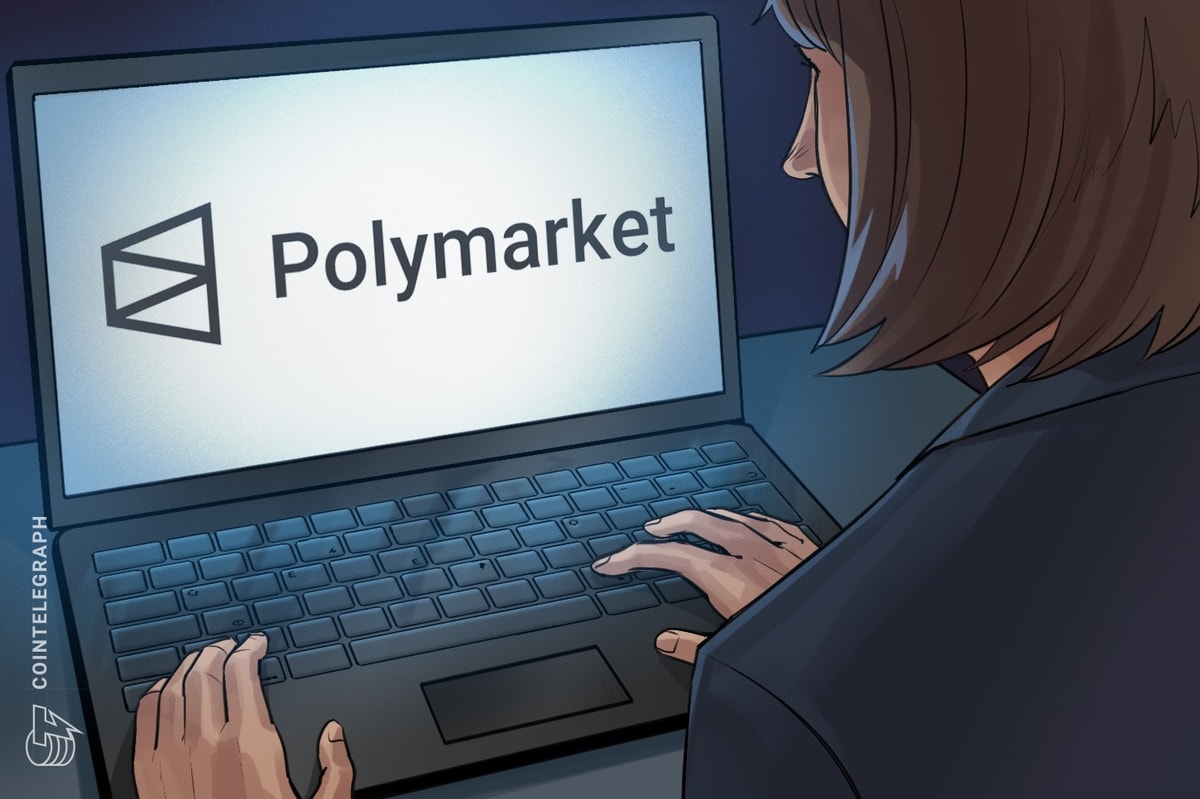
Polymarket won’t issue a refund
US elections fuel 565% prediction markets rise
Source link 
BTC in Stasis Below $88K as Trump Suggests Bigger Tariffs on EU, Canada

Dogecoin Price Eyes 10x Breakout After Elon Musk Ghibli Anime

XRP Price Rejected at Resistance—Are Bears Taking Control?

OpenAI expects to 3X revenue in 2025 but Chinese AI firms are heating up

‘Chart Is Still Broken’ – Crypto Analyst Predicts Sustained Downtrend for Altcoins Until This Takes Place

GameStop Announces $1.3 Billion Fundraising Plan To Purchase Bitcoin

Wyoming Governor Backs Away From State’s Failed Bitcoin Reserve Push

Priced at $0.20, this Solana competitor could be the next crypto to 20x

Why Are We Still Under the SEC’s Gun?

Expert Predicts XRP ETF Approval Is Only A ‘Matter Of Time’ As Approval Odds Soar

Analyst Unveils Extended XRP Price Target To $44, Reveals When To Take Profits

Would GameStop buying Bitcoin help BTC price hit $200K?

New SEC Chair Paul Atkins Holds $6,000,000 in Crypto-Related Investments – Here’s His Portfolio: Report

We’ve Turned A Generation Of Bitcoiners Into Digital Goldbugs

Solana DEX Raydium’s Pump.fun Alternative Is Going Live ‘Within a Week’

Arthur Hayes, Murad’s Prediction For Meme Coins, AI & DeFi Coins For 2025

Expert Sees Bitcoin Dipping To $50K While Bullish Signs Persist

Aptos Leverages Chainlink To Enhance Scalability and Data Access

Bitcoin Could Rally to $80,000 on the Eve of US Elections

Sonic Now ‘Golden Standard’ of Layer-2s After Scaling Transactions to 16,000+ per Second, Says Andre Cronje

Institutional Investors Go All In on Crypto as 57% Plan to Boost Allocations as Bull Run Heats Up, Sygnum Survey Reveals

Crypto’s Big Trump Gamble Is Risky

Ripple-SEC Case Ends, But These 3 Rivals Could Jump 500x

Has The Bitcoin Price Already Peaked?

A16z-backed Espresso announces mainnet launch of core product

Xmas Altcoin Rally Insights by BNM Agent I

Blockchain groups challenge new broker reporting rule

Trump’s Coin Is About As Revolutionary As OneCoin

The Future of Bitcoin: Scaling, Institutional Adoption, and Strategic Reserves with Rich Rines

Is $200,000 a Realistic Bitcoin Price Target for This Cycle?
Trending




